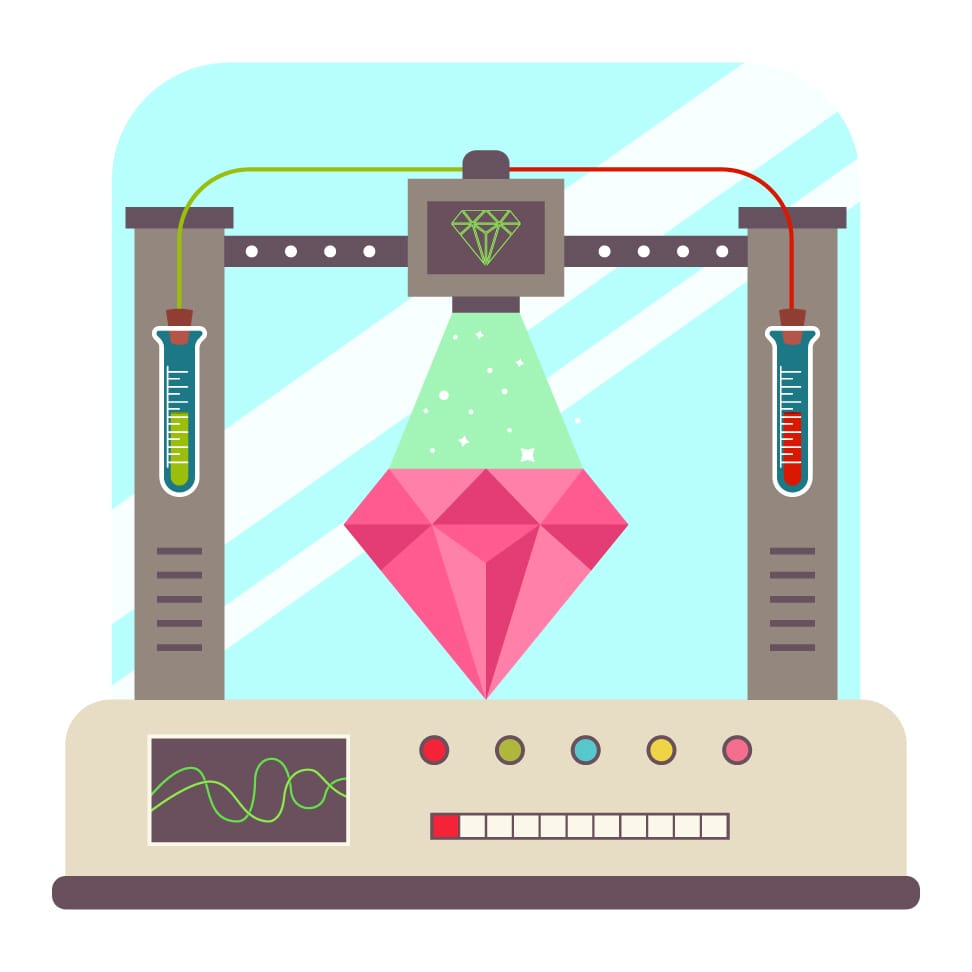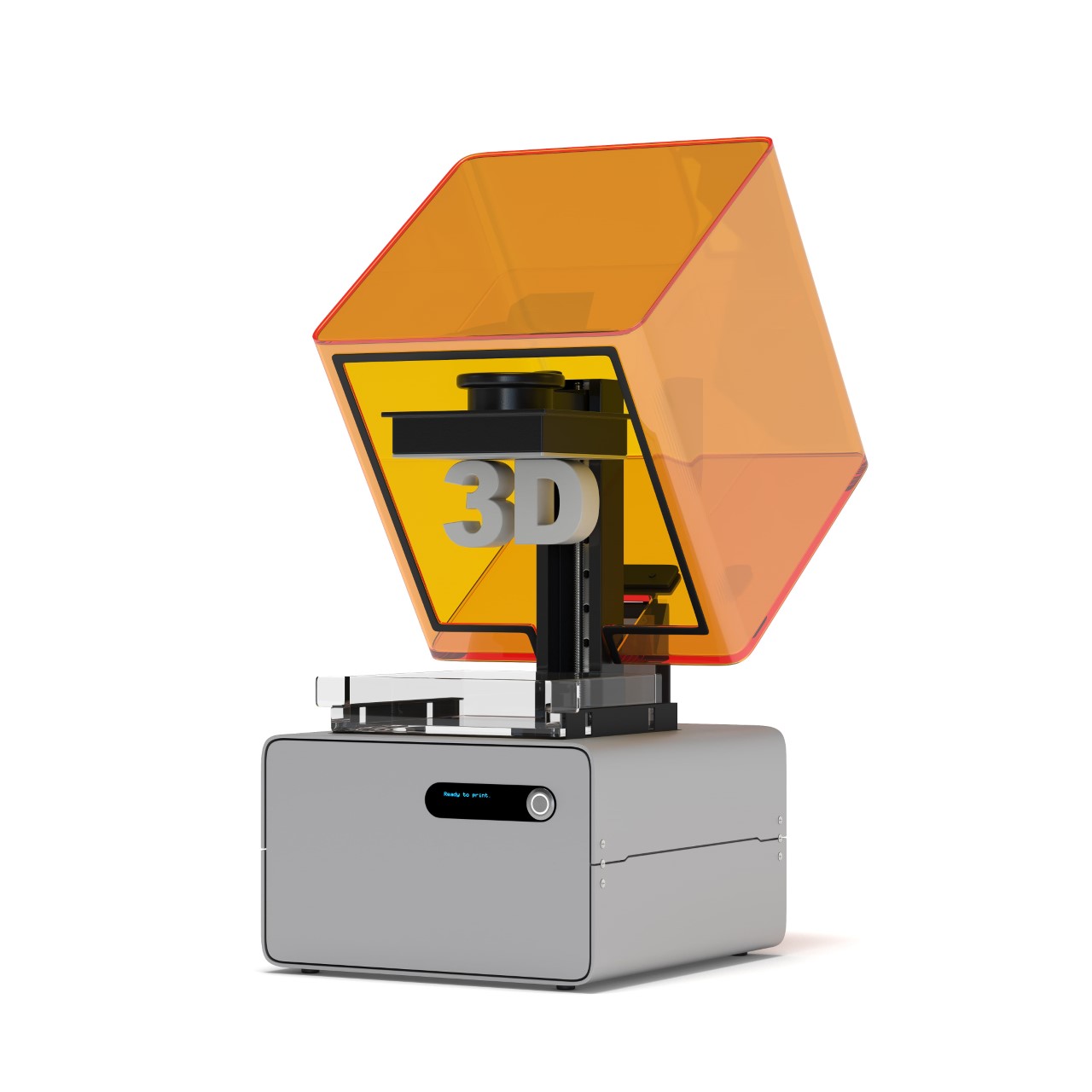Jewellery
3d jewelry printing: the future of jewelry?

Some have compared the arrival of 3D printing in the world of jewelry to the arrival of digital printing for photography: a real revolution. It is true that this technology has some rather revolutionary aspects in this field. But it is still the work of a machine with materials and rendering that remain different, which cannot replace the craftsman that is the jeweler who remains the soul of jewelry making. Nevertheless, many craftsmen have nowadays adopted, at least in part, 3D technologies for the undeniable advantages they provide in terms of time savings and economies of scale on a number of costs (notably the manual design and development work of the molds). Let's take an in-depth look with this article at the advantages and disadvantages of 3d printing for the world of jewelry and goldsmithing!
3D technology at the service of custom jewelry: the advantages
3D printing in jewelry means the manufacturing of a real jewel but from a mold that will be made from a 3d printer. When we know the precision of these computer devices, the interest can indeed be revolutionary to manufacture necklaces, rings, bracelets, pendants and other customized jewelry of all kinds such as earrings or even watches!
In addition to the creativity that these techniques allow jewelers, this technique offers considerable savings and cost savings at several levels of the jewelry manufacturing chain.
Considerable time savings: equipment that allows for precision and rapidity
3D printing, also called in its technical name Computer Aided Design (CAD) because everything is born from a computer, allows a significant time saving for the jeweler jeweler, at several levels. With computer modeling, the jeweler can create all kinds of molds and useful parts that he may need quickly. Computer software can also suggest models of parts that could be useful in the creation of his wax casts and complement existing models or creations. In fact, 3d printing is already a few years behind her and there are now printer models that can already be described as high definition printers with exceptional precision for a few thousand euros! It may seem expensive, but a craftsman can finally come to the conclusion that the investment is worthwhile and saves him a number of costs.
When a craftsman jeweler has his own store and he has to ensure everything himself in the production chain, from sales to advertising, any time saving, especially if it also allows a gain in quality, is a real asset to grasp. Not to mention that thanks to this time saving, insofar as it has a positive impact on the unit cost without losing quality, the jeweler will potentially be able to reduce the selling price of his creations and thus generate a stronger demand from consumers.
In terms of renewing the offer to the customer, the contribution of 3d printing is perhaps where the revolution is most tangible. Indeed, in terms of creativity, 3d printing makes it possible to design elaborate shapes that can be extremely difficult to obtain with the human hand. It makes it possible to create much more complex and precise shapes or structures, for example by creating shapes with different interlocking or interlocking structures. Some creations are feasible with human hand as well but would take much more time on the craftsman's jewelry work and this is really where the technology is nice and makes itself felt for the craftsman.
Moreover, the potentialities offered by 3d to the world of jewelry, watchmaking or jewelry no longer stop at printing: 3d scanners have now made their appearance, continuing the technological revolution already underway. Thanks to these machines, which are also high-precision, it is now possible to scan a piece of jewelry, to have all its digital information and to be able to reproduce it. Or, even, on the contrary, once the information is recorded, to be able to create a new jewel from the scanned one, to personalize or embellish it, and here again we find all the advantages of 3d mold printing. These techniques are also very useful for repairing a broken or damaged piece of jewelry: they can be used to draw the missing piece, which is sometimes tiny, used to join the two ends of a broken bracelet or ring, for example.
Total customization: unique and tailor-made creations
For i-diamants' customers, who are looking for original or unpublished creations, 3d printing makes it easier to meet this demand, as it is undeniably a tool that promotes originality in the production of jewelry. Thus, modeling makes it possible to create pieces that are undoubtedly more unique. As jewelers, it also allows us to leave much more room for our imagination and inventiveness. We have more flexibility to design our models with a computer because modifications, suggestions and customizations can be done more quickly and once the desired shape is created, we can have it visualized to the customer via drawings and 3D rendering, before printing it in 3d.
However, it should not be thought that once the modeling is done, printing is as simple as printing a sheet of paper on your printer. Indeed, it is necessary to pay attention to the selection of the materials on which one will print and in particular to their thicknesses, one should not choose unsuitable materials which will not support your creations.
To multiply your ideas in terms of potentialities offered by 3d technology, Internet is full of blogs and advice on the subject, whether from jewelers or 3d manufacturers. It is therefore also a new circle to work and advance one's creativity. You can try things, try them out, refine them, start them over: 3d allows you to start from scratch very easily or to keep in the computer certain aspects of creation that you don't want to evade.
An asset of quality: the degree of fineness according to the geometrical complexity of your future jewel
The precision of 3d design and printing technologies is unrivalled, which is precisely why jewelry is an area particularly targeted by 3d printing, which lends itself very well to this sector. In fact, 3d printing gives the possibility to manufacture unique pieces and to be able to adapt to all degrees of fineness and complexity required by the customer.

What are the limits of 3D printing?
If the technologies developed by 3d jewelry printing allow undeniably quite revolutionary progress, the mutation is still in its infancy and not all materials can be used yet. On the other hand, some craftsmen are still deeply rooted in the manual tradition of their trade and therefore remain for the moment rather reluctant to these mutations induced by technological progress.
For the moment, 3D printers print wax, but not yet gold, because the process is too slow and too expensive
In theory, all materials can be suitable for 3D printing. In fact, it is only up to the printer to make sure that it adapts to the material.
There are several types of materials that can be used for 3d printing and manufacturing. The two categories are plastics and metals. Obviously, in jewelry, we tend to use metals and, in addition, wax.
The problem that can exist with metals is that they are materials that each have their own peculiarities and flexibility. Thus, using gold for printing is too expensive because the process is too slow and therefore too expensive.
The manufacture of jewelry is therefore done using techniques in liquid resin (wax) heat-sensitive. The two main techniques currently used are SLA (Stereolithography) or DLP (Digital Light Processing).
It is also important to know that the wax that is proposed for the casting of parts by 3d printer is not natural wax but a wax made with materials that are as close as possible to natural wax. This is to make the product more adapted to the processes of a 3d printing and to give a better quality mold for a jewel with as much perfection as possible.
The price of 3D printer waxes remains always more expensive than the price of waxes from traditional molds
The technique of 3d printing being in itself already quite expensive, to this is added the price of waxes for these tools which turn out to be a little more expensive than the price of waxes for traditional type molds. This is not necessarily incomprehensible to design: the wax for these devices must be of a particular quality and not too hard to handle like a traditional wax so that the printer can really make the product that has been designed on computer. Traditional waxes are designed to be handled by the human hand and its tools.
A wax for a 3d printer requires more malleability, more fineness and it is this difference that inevitably affects the price.
No 3D printing can replace the know-how and expertise of the craftsman jeweler.
Many craftsmen or jewelry houses have been tempted by technology, but they have not abandoned traditional methods and know-how either. In fact, jewelry remains without a doubt a tradition that is more than secular, even millennia old in reality, and those who are most attached to traditions, which have been handed down from generation to generation, obviously do not intend to discard them and give way to new technologies that give the impression that they are taking over this historical know-how. Moreover, these craftsmen who perpetuate their know-how often have the impression that the machine will in fact have the effect of stealing their work, which is never a pleasant feeling (even if the advantage of 3d printing is that it responds to the real need for authenticity that is developing among customers). However, it is important for jewelry craftsmen and craftswomen to understand that 3d printers are not going to steal their work but are above all there to provide them with an innovative tool on which they can rely to renew their creativity or simply to save time and costs in several considerable areas.
Some major jewelry houses have indeed let themselves be tempted by the use of 3D technologies. Their craftsmen have all followed a classical, advanced and demanding training in traditional jewelry, but are now being introduced internally to 3D printing in addition to their background and know-how.
Nevertheless, as has been said, for the most demanding houses in terms of precious metals, nothing can yet replace the hand of man for working on materials that are capricious with 3d technology printing, the hand of man that remains, as many jewelers say, the extra soul for each piece of jewelry.